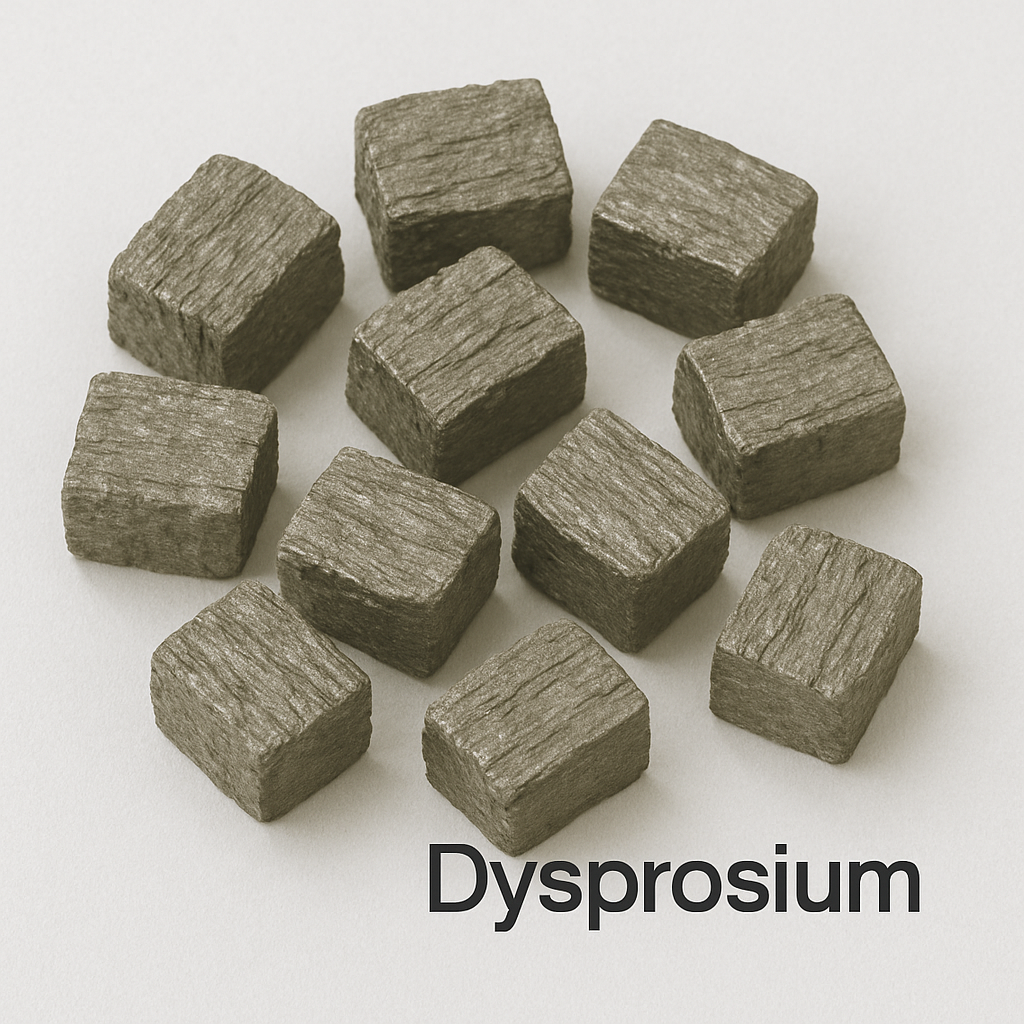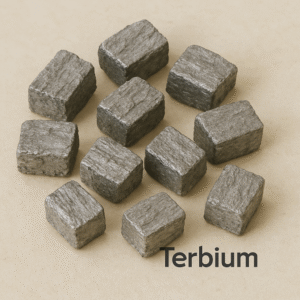Your cart is currently empty!
Dysprosium (Dy)
Basic Information Element Name: Dysprosium Symbol: Dy Atomic Number: 66 Atomic Weight: 162.50 Element Category: Lanthanide (Rare Earth Element) Standard State: Solid Appearance: Silvery-white, soft, and easily workable metal Chemical and Physical Properties Density: 8.55 g/cm³ Melting Point: 1,407 °C (2,565 °F) Boiling Point: 2,567 °C (4,653 °F) Electronegativity (Pauling scale): 1.22 Oxidation State: +3 (dominant) Magnetism: Strongly paramagnetic […]
Description
Basic Information
-
Element Name: Dysprosium
-
Symbol: Dy
-
Atomic Number: 66
-
Atomic Weight: 162.50
-
Element Category: Lanthanide (Rare Earth Element)
-
Standard State: Solid
-
Appearance: Silvery-white, soft, and easily workable metal
Chemical and Physical Properties
-
Density: 8.55 g/cm³
-
Melting Point: 1,407 °C (2,565 °F)
-
Boiling Point: 2,567 °C (4,653 °F)
-
Electronegativity (Pauling scale): 1.22
-
Oxidation State: +3 (dominant)
-
Magnetism: Strongly paramagnetic
Reactivity and Storage
Dysprosium is reactive, especially at elevated temperatures. It oxidizes in air, reacts slowly with cold water and more rapidly with hot water, and dissolves readily in dilute acids. For preservation, it is stored under mineral oil or in an inert atmosphere.
Occurrence and Extraction
Dysprosium is not found in free form in nature. It is typically recovered from minerals such as xenotime, monazite, and bastnäsite, often alongside other heavy rare earths. It is separated through solvent extraction and ion exchange processes.
Isotopes
Naturally occurring dysprosium consists of seven stable isotopes, with Dy-164 and Dy-162 being the most abundant.
Key Applications
1. High-Performance Permanent Magnets (NdFeB + Dy)
-
Dysprosium is critical in neodymium-iron-boron (NdFeB) magnets to improve thermal resistance and coercivity
-
Used in:
-
Electric vehicle (EV) motors
-
Wind turbine generators
-
High-speed rail systems
-
Aerospace actuators
-
2. Nuclear Reactor Control Rods
-
Due to its high neutron absorption cross-section, dysprosium is used in control rods to moderate nuclear reactions
-
Especially valuable in compact and mobile reactors (e.g., submarines)
3. Laser and Lighting Technology
-
Dy-doped materials are used in infrared lasers, fluorescent lighting, and metal halide lamps
-
Emits bright white and yellow hues, ideal for high-intensity lighting
4. Data Storage & Hard Disks
-
Dysprosium is alloyed with terbium and iron in magneto-optic storage media
-
Ensures data stability under high-temperature operation
5. Alloy Additives for Special Metals
-
Dy improves the strength and workability of magnesium alloys used in aerospace applications
-
Enhances corrosion resistance and operating temperature range
Strategic Importance
-
Considered a critical rare earth element due to limited global production and high demand in clean energy and defense sectors
-
Supply risk is high, as over 90% of the world’s Dy supply comes from China
-
Dysprosium substitution and recycling are active research areas
Interesting Facts
-
Discovered in 1886 by French chemist Paul Émile Lecoq de Boisbaudran
-
The name “Dysprosium” comes from the Greek dysprositos, meaning “hard to get,” due to early difficulties in isolation
-
Plays a vital role in the decarbonization of energy and transportation
Additional information
| Weight | 1 lbs |
|---|---|
| Dimensions | 1 × 1 × 1 in |
| Weight | 100G |
-
Cerium (Ce)
$257.00 -
Erbium (Er)
$174.00 -
Europium (Eu)
$1,550.00 -
Gadolinium (Gd)
$106.00 -
Holmium (Ho)
$291.00






